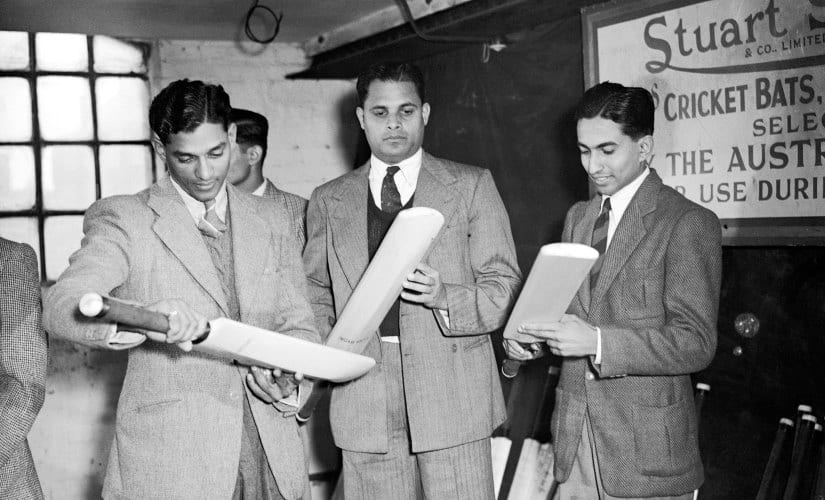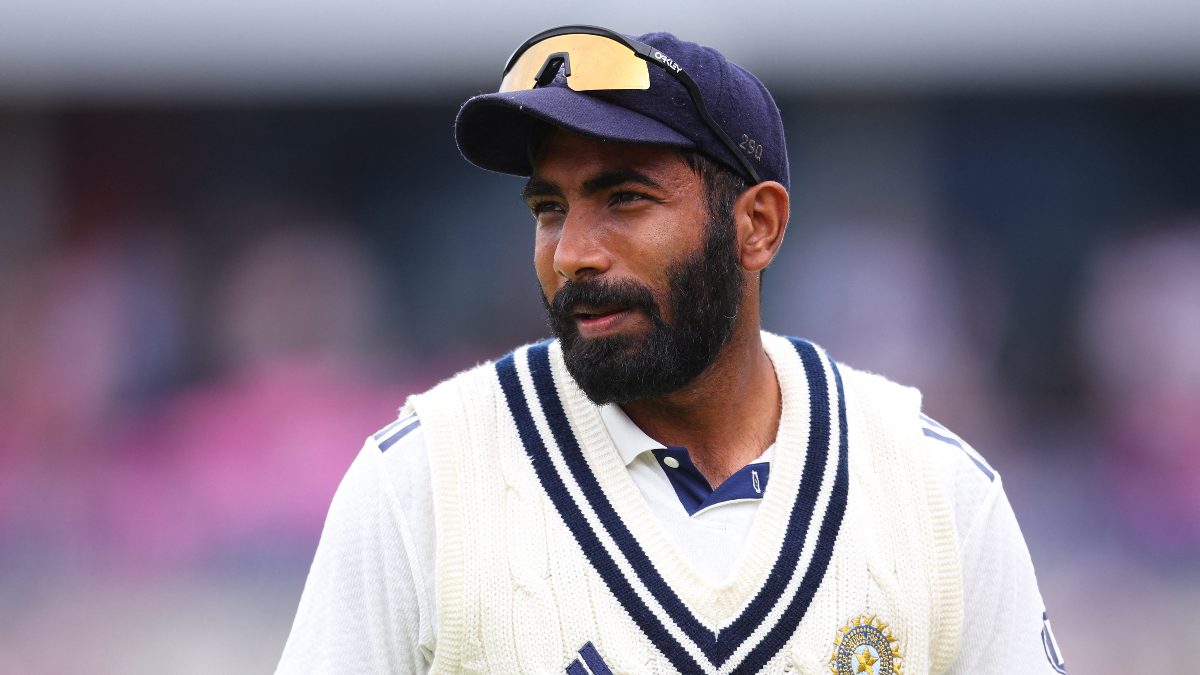In ‘Nostalgia Drive’, Anindya Dutta celebrates a significant victory in Indian cricket which occurred in that corresponding month in history *** The year was 1946. In the first summer of first-class cricket after a devastating and debilitating war, the last team from Undivided India to tour Britain landed on her shores. The squad included Hindus, Muslims, a Parsi (Rusi Modi), and a Christian (Vijay Hazare) — a side that represented the country’s diversity. Leading the team, was Iftikhar Ali Khan, the Nawab of Pataudi, a man who had made his debut for England during the infamous Bodyline Series of 1932-33. It was one of the wettest summers recorded in England, made worse by the early May start. But that did not prevent the crowds from coming out in numbers to witness the return of first-class cricket. This was a British Isles caught between the exhilaration of emerging victorious from the Second World War, and the devastation the war had wrought upon the country. The prospect of cricket was as invigorating as the summer rain. Pataudi’s team would play 33 matches on a tour that lasted four months. Twenty-nine of the matches, including three Tests, were first-class, and the Indians would win 11 of them, losing only four. Starting their tour in Worcester and stopping by at Oxford, the visitors came to the Oval in London for a match that was destined to adorn the history books for decades to come. [caption id=“attachment_8317241” align=“alignnone” width=“825”]  (L-R) India’s CS Nayudu, Shute Banerjee and Chandra Sarwate examine cricket bats (Photo via Getty Images)[/caption] ‘What’s the Hurry in Surry?’ If you drive down the beautiful country roads in Surrey, barely an hour south of London, signs accost you every so often sending a subtle message to slow down, given the outstanding scenery. They read — What’s the Hurry in Surry? On 11 May 1946, at the Oval, where Surrey plays their home matches, their captain, Nigel Bennett, (an amateur club Cricketer, who urban legend suggests was leading the side in a case of mistaken identity — the invitation to captain the county had gone out to him instead of Major Leo Bennett, a more accomplished cricketer) would ignore the sage advice displayed on the roads of his home county, in his hurry to end the Indian innings. During the war, as Martin Williamson wrote in ESPN Cricinfo, ‘The Oval had been used as a searchlight site and then a prisoner-of-war detention centre. German bombs had damaged the pavilion and stands. The square, fenced off, had not been touched for six years. This was the inaugural first-class match at the ground since the end of hostilities the year before.’ Miraculously, the wicket was in good condition, and the Indians batted sensibly after losing two quick wickets. The one Surrey bowler who troubled them was Alec Bedser, about to make his debut in the first Test match, barely a week away. By three minutes past four in the afternoon, Bedser had the Indians in dire straits at 205 for 9. It was at this stage that No 11 SN ‘Shute’ Banerjee strode out to join No 10 CS ‘Chandu’ Sarwate at the crease. ‘Banerjee came to join me,’ Sarwate was to later recall. ‘The Surrey captain then thought that we would last hardly a few minutes. He called the groundsman and was trying to tell him the roller that he would require.’ Banerjee and Sarwate — Two Contrasting Careers Sarobindu Nath ‘Shute’ Banerjee was 35-years old when he stepped on to the Surrey turf that day. It was not his first tour of England. In 1936, he had come to the British Isles as a feared fast-medium pacer in a team led by the unworthy Vizzy. Unwittingly made a pawn in a game of upmanship and petty rivalry between Vizzy and CK Nayudu, Banerjee was told just before the Test match started that he would no longer be a part of playing XI and would be replaced by Baqa Jilani. Jilani had ‘earned’ his place by publicly insulting Nayudu at the breakfast table on the instigation of Vizzy. Ten years later, he would once again be denied a Test cap in England as lesser players won theirs. Banerjee would eventually play a sole Test match at home at the age of 38 against the West Indies in 1949, picking up five-wickets on a debut that had been delayed by 13-years. In a fulfilling first-class career stretching more than 30 years, Banerjee took 385 wickets in 138 matches at an average of 26.61. For a fast-medium bowler operating on largely unresponsive tracks, these were magnificent numbers. His stock delivery was the one that came into the batsman, often resulting in a thick edge to the wicket-keeper. Slower balls that moved away after pitching in line was a variation that brought him a lot of wickets. He was no mug with the bat either. With 3,715 runs including five centuries and 11 fifties, Banerjee made his wicket count as long as he was at the crease. As he walked in that day at The Oval, with his team’s situation precarious, Banerjee took comfort from the fact that in the previous season’s Ranji Trophy, he had scored a fifty opening the innings for Bihar. The man greeting him midway at the pitch was another remarkable character. Chandrasekhar Trimbak ‘Chandu’ Sarwate was a fingerprint expert by profession with degrees in Arts and Law, and a cricketer by design. With 494 wickets against his name, this leg spinner in a career spanning 32 years had made a name for himself in the domestic circuit. And with 14 centuries and 38 fifties, he was far more accomplished than any No 10 batsman had a right to be. He was fated to be luckier than Banerjee, getting the opportunity to play nine Tests without particularly distinguishing himself in the process. More importantly, Sarwate had also opened for Holkar, scoring a hundred in the Ranji Trophy semi-final, and the Banerjee-Sarwate pair had actually opened together for East Zone in 1945-46. But the inexperienced Nigel Bennett could not have known any of this, and was in for the surprise of his life. The Greatest Last Wicket Stand in History Sarwate would later sum up what happened next when he recalled: ‘That evening we couldn’t do anything wrong.’ Indeed they couldn’t. The two men attacked with some brilliant hitting on the off side and Surrey had no answer, handicapped after Bedser’s 39-year-old fast bowling partner Alf Gover had gone off with a strained tendon in his heel. By close of play on that first day, Sarwate had reached 107, Banerjee was 87, and the pair had added 193 in two hours. As the players trooped off The Oval that evening, Bennett did not even glance at the groundsman. The roller had long been forgotten. John Arlott, making his debut as a BBC commentator in the series, wrote in his match report: ‘The two men batted capably and correctly, defending well against Bedser who bowled industriously, and scoring, chiefly in front of the wicket, by strokes made out of confidence and with no trace of last-wicket anxiety.’ The next day was Sunday, a rest day. At 12.27 pm on Monday, the stand finally ended when Banerjee was dismissed. The pair had added 249 in three hours and ten minutes, Sarwate making 124 not out and Banerjee 127. It had been the greatest last-wicket stand in history. Never before nor since have both No 10 and No 11 both scored a century in a first-class match. The demoralised Englishmen were dismissed for 135, CS Nayudu taking a hat-trick with his leg spin. Pataudi gave Banerjee a rest from bowling. He had done enough. Surrey followed on, ending the day at 172 without loss. But the next day Sarwate got into the act with his leg spin and picked up five for 54 to make the match truly memorable for him. When the Indian opening pair walked out to score the 20-runs needed to register their nation’s first win in 10-years in first-class cricket, Surrey had their final surprise. As a reward for his all-round showing, or perhaps in a blatant display of princely schadenfreude, captain Pataudi had sent Sarwate out to face the first ball of the innings. Chandu Sarwate did not hit the winning runs as his captain had hoped, losing his wicket in his eagerness to score. But as India rattled off the runs, and Sarwate and Banerjee embraced each other in the dressing room, they were not to know that seven decades on, their dual centuries, scored while batting at No 10 and 11 respectively, would endure in the record books, their names forever immortalised by this greatest last-wicket stand in cricket. Anindya Dutta is a cricket columnist and author of four bestselling books. His latest, Wizards: The Story of Indian Spin Bowling won India’s Cricket Book of the Year award for 2019 and is long-listed for the MCC Book of the Year.
Starting their tour in Worcester and stopping by at Oxford, the last team from Undivided India to tour Britain came to the Oval in London for a match that was destined to adorn the history books for decades to come.
Advertisement
End of Article


)

)
)
)
)
)
)
)
)



